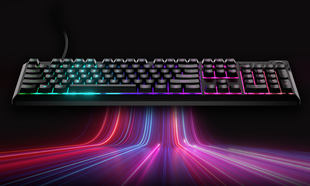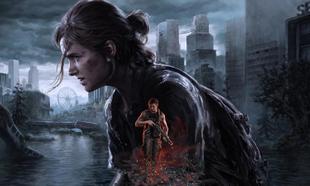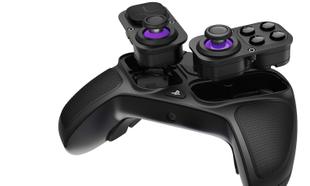Trek to Yomi wears its film inspiration proudly on its sleeve, and the atmosphere and tone set by the stunning cinematography and sound design fit right in with some of Kurosawa’s best features.
Every corner turned reveals another visual masterpiece that manages to leave the player enraptured, and the seemingly familiar plot takes a few turns that keep it fresh and engaging. But it's still not enough to distract from the shallow combat mechanics, exploration, and puzzles that litter the experience.
It can’t be denied that this game is gorgeous. 'Cinematography' is a word not often used in reference to video games, but Trek to Yomi yearns to remind you of the movies that inspired it, with it’s letterboxed aspect ratio, vintage film grain complete with dust and scratches akin to those from an old-school reel played on a projector, and it’s grayscale, monochromatic colour palette.

The parallax effects in some of the side-scrolling sections and use of depth are really nicely implemented, giving it an air of a stage production. It doesn’t once disappoint visually, and there are some moments that will leave you in genuine awe of what you’re seeing. Turning off the bloom and grain effects are possible, but it feels like taking away a part of the game’s personality.
The story of Trek to Yomi is one of duty and honour, versus love and revenge. It starts as a basic enough plot, with your standard archetypal characters - hero, sage, lover, outlaw - but has a few twists that the player might not be expecting.
You play as Hiroki, a young samurai sworn by vow to protect the people of his village. The player must make some choices throughout the game, but these don’t alter the gameplay, only the outcome at the end. It’s a satisfying tale to see through, with likeable characters made real by the fantastic voice acting. It does get quite heavy in parts; it’s not all lighthearted, low stakes storytelling - bad things happen to people.
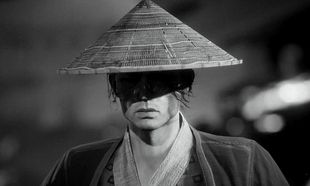
The gameplay is where things start to detract from the overall experience. At first, combat is simple with a handful of combos consisting of a mix of light and heavy attacks, and blocking and parrying skills vital to surviving the game. Bo-shuriken are obtained early on as a ranged weapon, with a bow and an archaic gun found later on. The main pitfall of the combat are the combos that are found by exploration as the player progresses.
Once the player learns a simple three step combo that stuns enemies, and a finisher move that is an instant kill to stunned enemies, no other moves are needed or useful. Trying to use more lengthy combos proves both pointless, and inefficient - the timing windows on some longer strings seem erratic, and leave you in a compromising position open for attack when you thought you would be lopping heads off. It’s not terrible combat, but it’s not fantastic either.
The boss battles in Trek to Yomi are a nice change of pace. These enemies are immune to your stun attack, and usually require certain tactics to overcome, tactics that will take many, many tries to figure out. Let’s just say that the incredibly quick load times are a blessing! The aforementioned ranged weapons work well as a bit of an extra attack, but the limited ammo means they can’t be used as a primary method of combat, which is as it should be for this style of game.
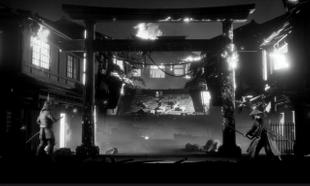
The game goes between free exploration sections with collectibles and upgrades to find off the beaten path, and almost on-rails combat sections where the player only moves along the x-axis, 2D side scroller style. The camera varies too, with some segments at a side-on, Metroid style angle, and then some fixed camera angles similar to classic Resident Evil or Onimusha games.
The exploration is fairly lacklustre, and really only serves as a distraction from the main path rather than giving any real sense of reward. The same can be said for the overly simple puzzles, which boil down to “push the thing” or “remember these three symbols and then input them right here in the same place”. They add nothing to the game, and would not have been missed had they not been there.
But with all of these flaws, Trek to Yomi is a captivating experience of a game that I recommend playing. It’s beautiful, and despite the combat that leaves a bit to be desired, this is a fun game. It’s a short mostly linear game too, which is a nice break from epic open world mammoths that you need a second life to play. This can be finished in around 6 or so hours, and then there is a fun extra difficulty mode where both the player and enemies die in one hit (not counting bosses).
Coming in at just €20 on release, it’s accurately priced for what you’re getting. It’s also on Gamepass, so if you’re subscribed to that then it is definitely worth a play. It proves that games striving to be cinematic beasts don’t have to rely on lengthy cutscenes - with Trek to Yomi the game IS the film.






































































